
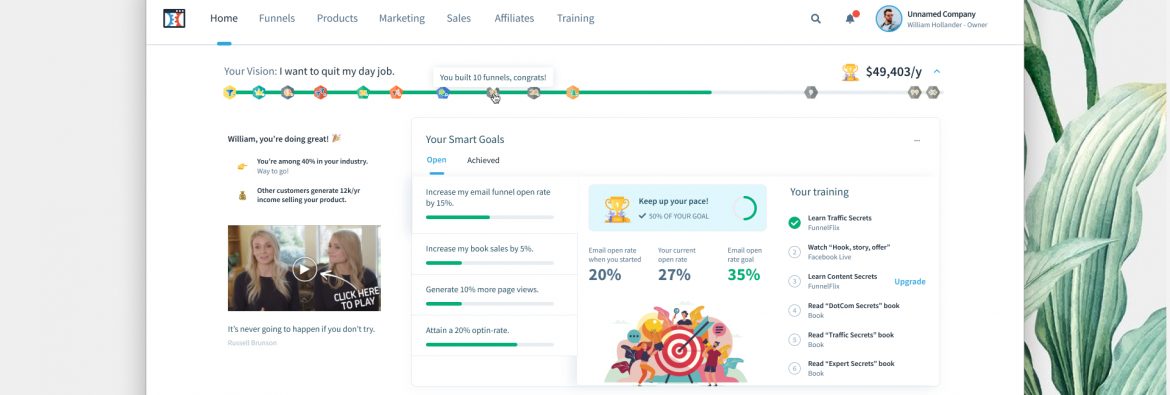
ClickFunnels is a cloud-based SaaS B2B platform that allows businesses of all sizes to generate leads and sales. I helped to develop their dashboard and core navigation.
Timeline and Contribution
This case study presents the features I was fortunate to be responsible for designing from early 2019 to late 2019. My day-to-day job included user research, prototyping, interface design, documentation, and design QA. Collaboration with my team of engs, PMs, and stakeholders helped to shape the product a lot.
My Role
Senior Product Designer
Problem Space
Clickfunnels is one of the world’s most popular online sales funnel platforms where users can quickly and easily create beautiful sales pages that convert visitors into leads and paying customers. No tech, design, or coding experience necessary.
Launching a business is always a sensitive matter. You need constant motivation and dedication to move forward against various odds. Some data showed that many people lost hope if they haven’t managed to launch their business within 3 months. For a long time, ClickFunnels hasn’t had a dedicated design team which resulted in a complex navigation and experience. Since the product contains many different online business pieces (funnels, products, email marketing, affiliates, etc.) the experience itself became fragmented. Users desperately needed a comprehensive view of how their business were doing, what could be improved to optimize it, continues view of their goals and clear path to reach their vision.
Outcome
The dashboard part of the ClickFunnels product design helped users to have a comprehensive view of their business, incorporated education on how to optimize them and improved navigation to easily find all the parts to run their business smoothly. We incorporated SMART goals with product analytics and contextual training. While also providing a community inspiration and a gamified experience of achievement.
Here’s the dashboard experience:
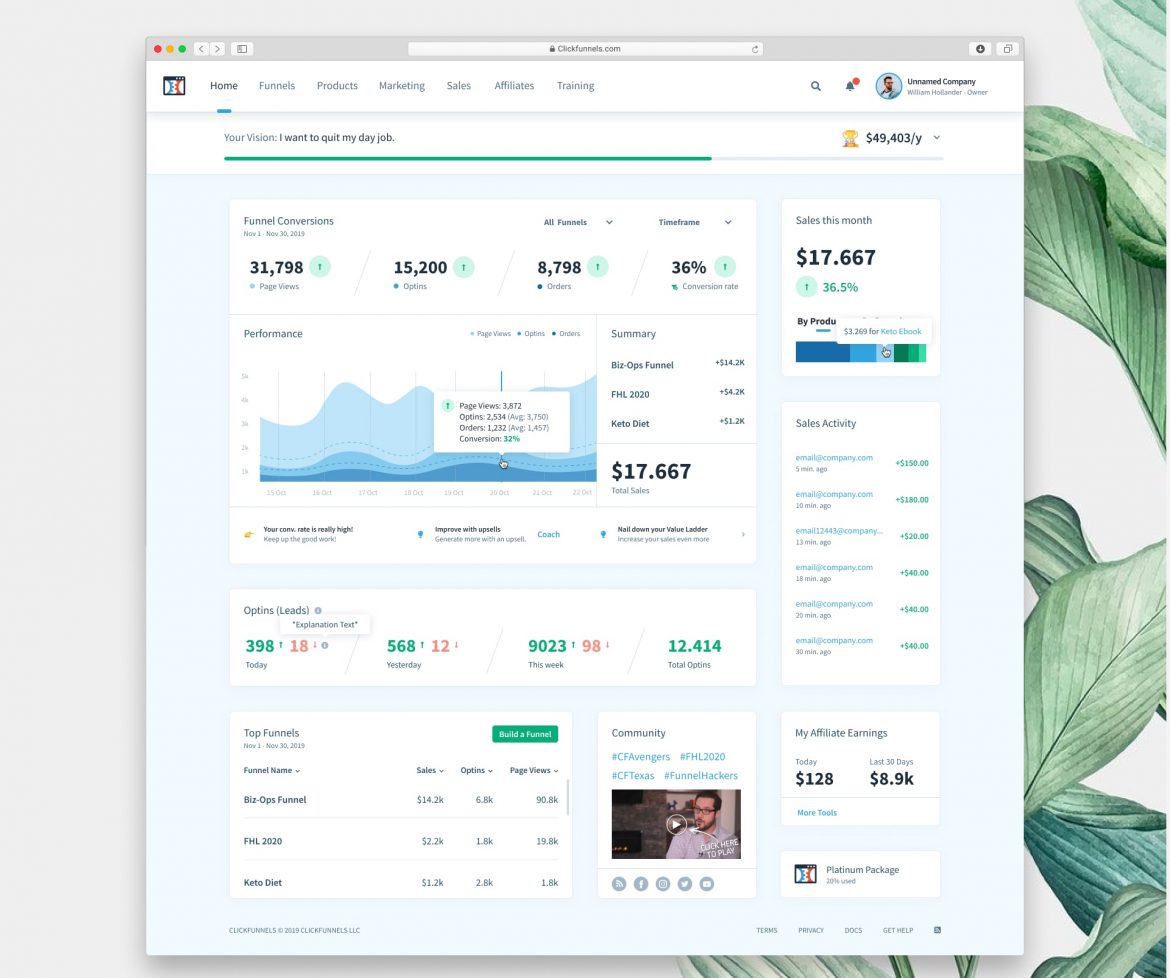
Process
This story is a quick catch-up, not a full representation of all the processes my team and I went through, which included a ton of workshops, studies, surveys, and trials and errors. However, I have a sneak peek at product thinking behind all solutions you already saw. Happy to discuss things in-depth.
Empathizing for users
After dozens of remote testing sessions, surveys, many hours of CX discussions, shadowing, we observed this repeated overwhelming fear of “not knowing what to do and messing up”, which users encountered once they got lost in the product. Today, they look for a convenient and seamless experience of creating their business online, not being overwhelmed and then give up.
Market Research
To better understand what it means to be in the first online business creator shoes, I attended One Funnel Challenge webinar, various workshops and Facebook groups. I spent 40+ hours using competitors’ apps. I got a spreadsheet with main table stakes and a practical understanding of competitors’ product funnels comparing to our value props.
Vision
After our user vision sprint, we focused on winning customers with the easiest way to set SMART goals, providing contextual education and constant motivation while providing an efficient way to complete their main tasks to fully utilize the product and launch their business.
Our first step was to build core new user functionality to be visible on the dashboard, so they know instantly what actions they should take to build their business or optimize it.
Strategy
We not only wanted to provide a comprehensive view, but to inspire users to reach their goals. We used SMART methodology, behaviour science, gamification to help them to be motivated and help to overcome any odds like self-doubt that usually happens for a new business starters.
Special Thanks
Here’s a small fraction of people who I want to thank for being my partners in crime and supporting me during this unique experience of building ClickFunnels Dashboard:
Paul King, Nicholas Perner, Seena Sabti and many others
Navigation
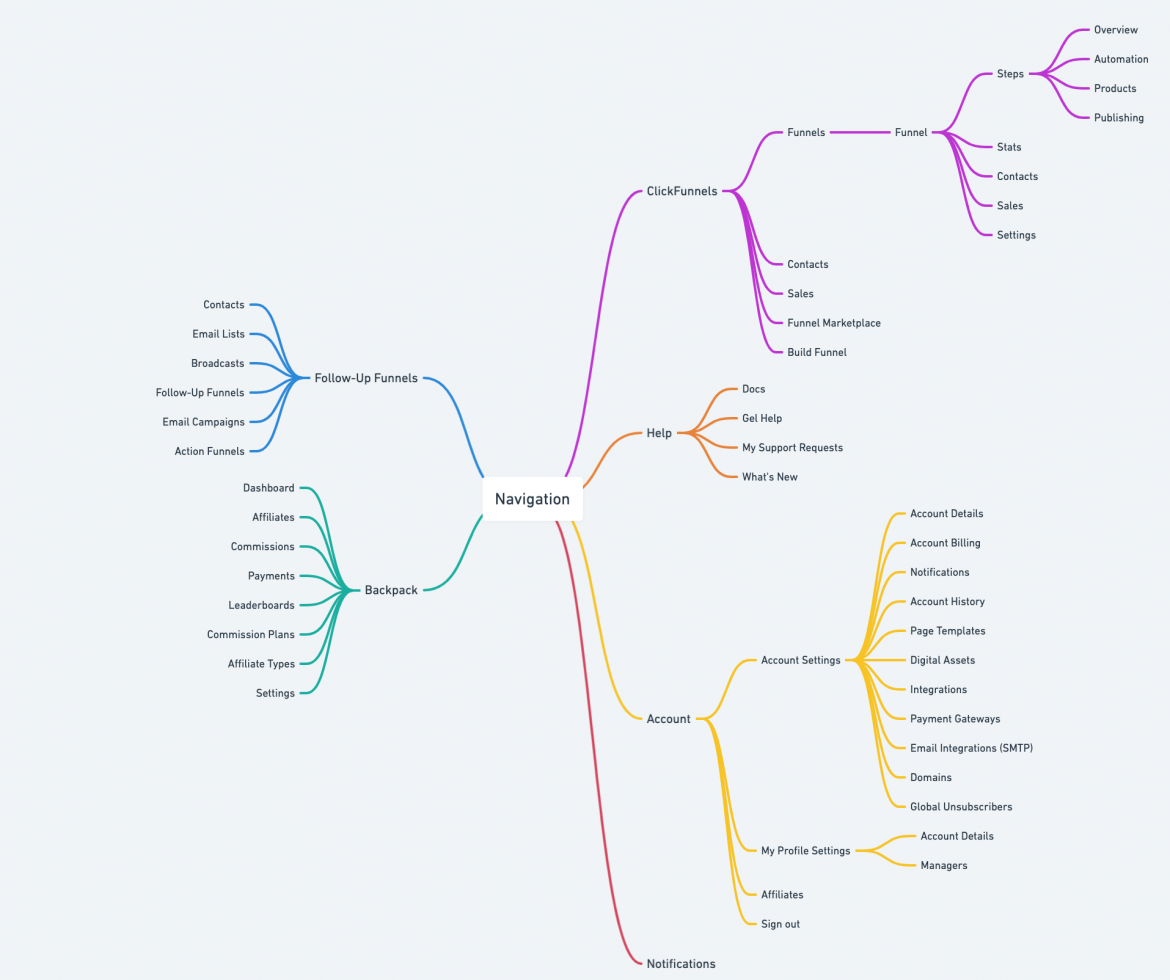
Current navigation had more than 4 layers of depth. Tree Testing showed that 60% of new users failed to perform key use cases due to this. We tested the most common use cases for customer success (e.g. add a product to a checkout page).
Card Sorting
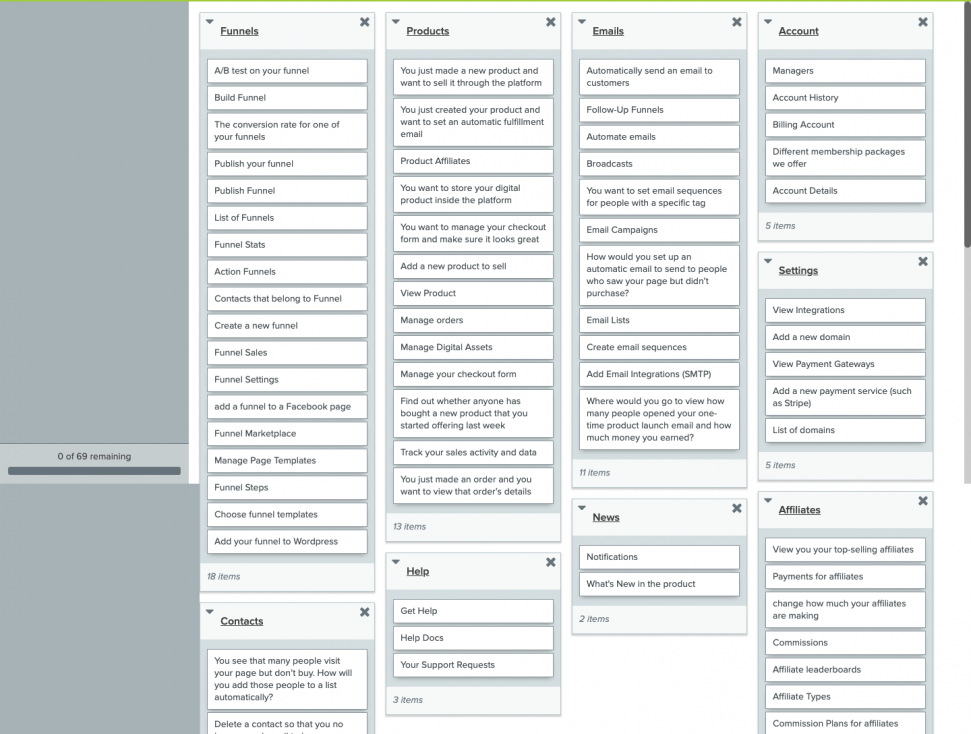
We performed 4 remote Card sorting sessions with our user base to understand how our users group information. It’s a technique in which a person tests a group of users to generate a dendrogram or folksonomy.
Tree Testing
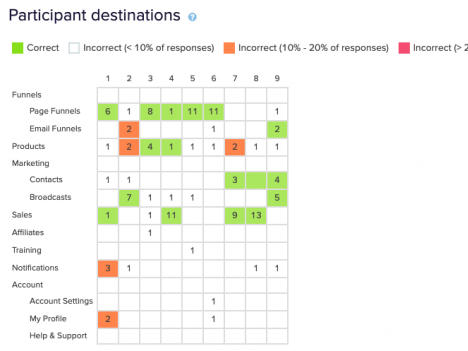
Later we performed 4 Tree Testing sessions using 9 most common use cases. This usability technique helps to evaluate the findability of topics in a website.
Google Analytics Data
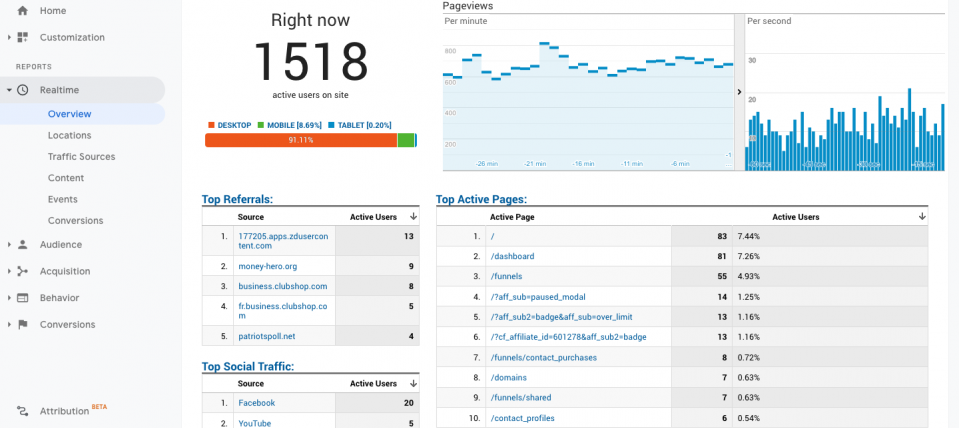
We compared Card Sorting & Tree Testing results with Quantitative data to make data-driven insights.
New Navigation

The new navigation improved task completion rate by 30%.
Mobile Navigation
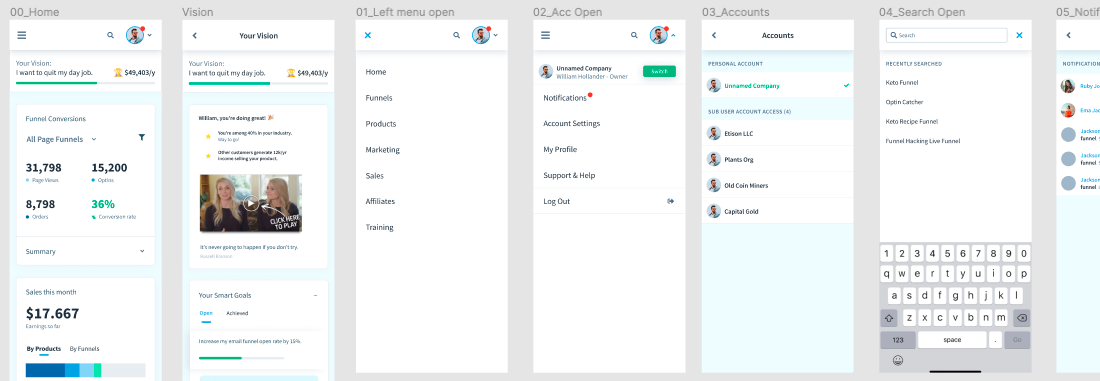
Wireframes

We developed gamified experience using behaviour science and SMART goals to help users to launch their business.
Smart Goals
Smart Goals
Goals are part of every aspect of business/life and provide a sense of direction, motivation, a clear focus, and clarify importance. By setting goals, you are providing yourself with a target to aim for. A SMART goal is used to help guide goal setting. SMART is an acronym that stands for Specific, Measurable, Achievable, Realistic, and Timely. Therefore, a SMART goal incorporates all of these criteria to help focus your efforts and increase the chances of achieving your goal.


We incorporated SMART goals with product analytics and continues training. While also providing a community inspiration and a gamified experience of achievement.
Take-aways
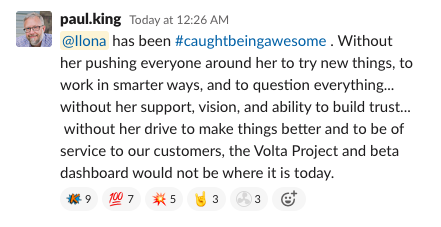
I learned a lot during this experience. Especially how important it’s to empathise with users and ask their input early on and keep them involved in various iterations.
Here’s a small fraction of people who I want to thank for being my partners in crime and supporting me during this unique experience of building ClickFunnels Dashboard:
Paul King, Nicholas Perner, Seena Sabti and many others
